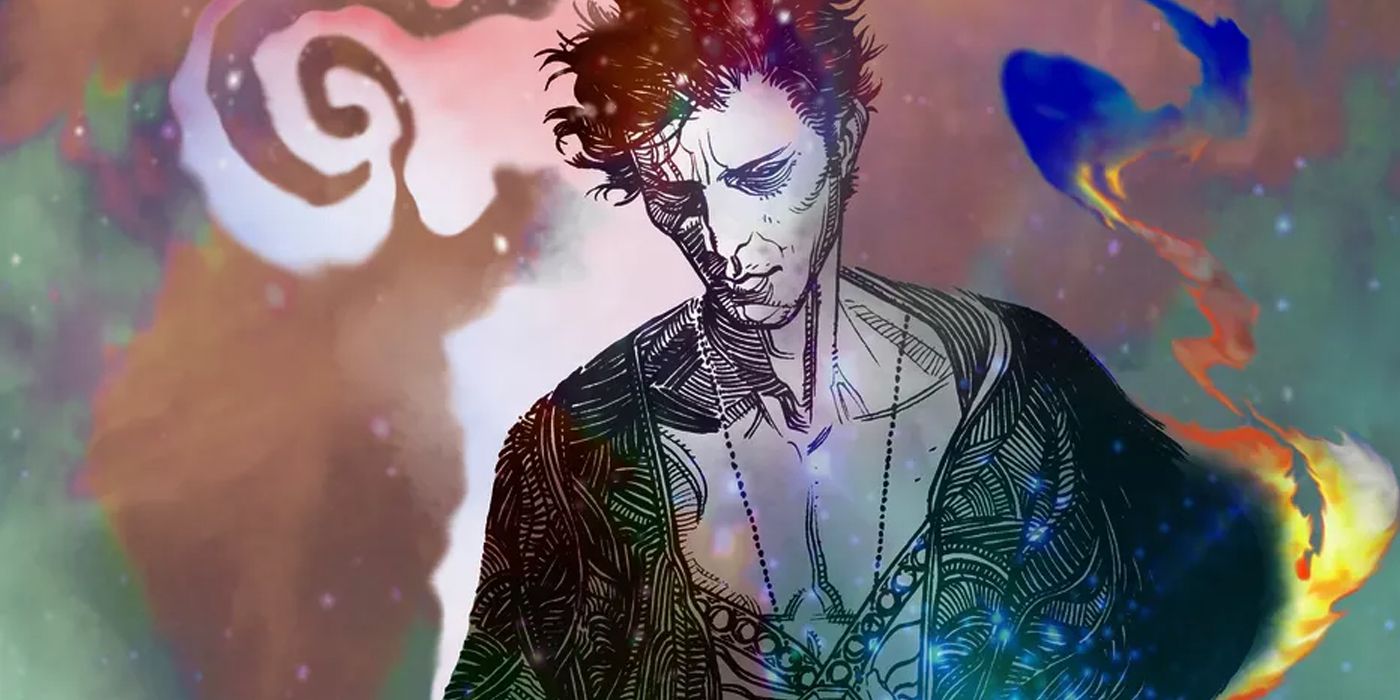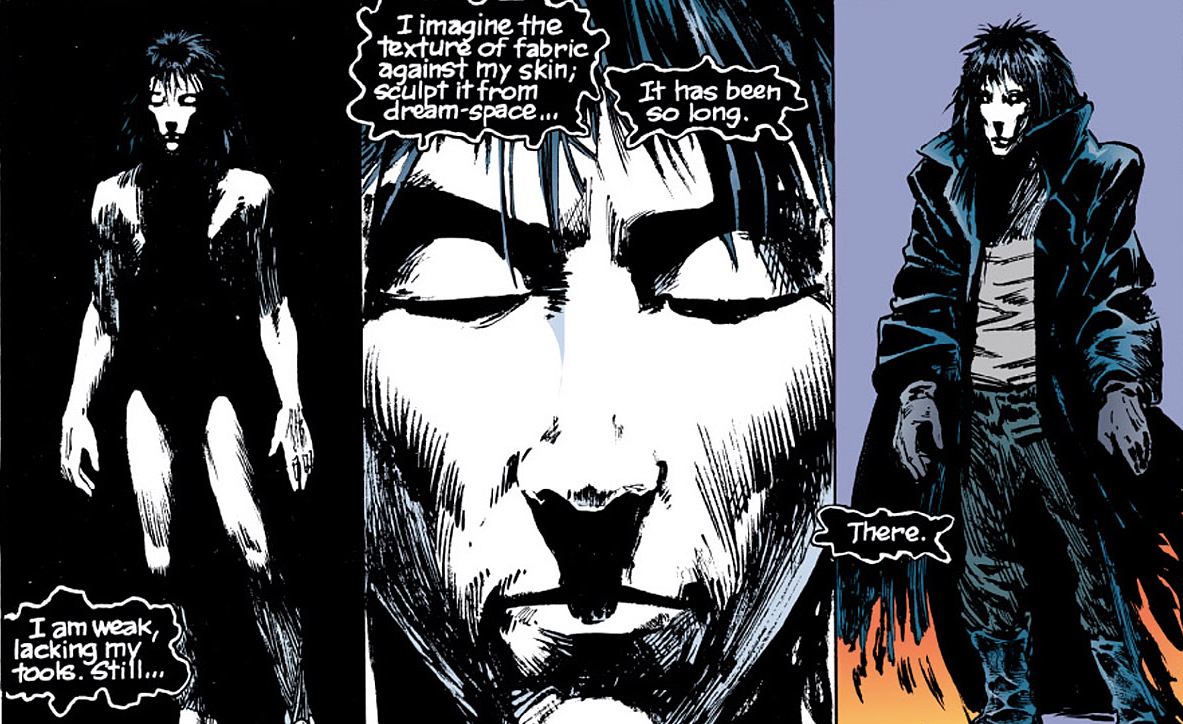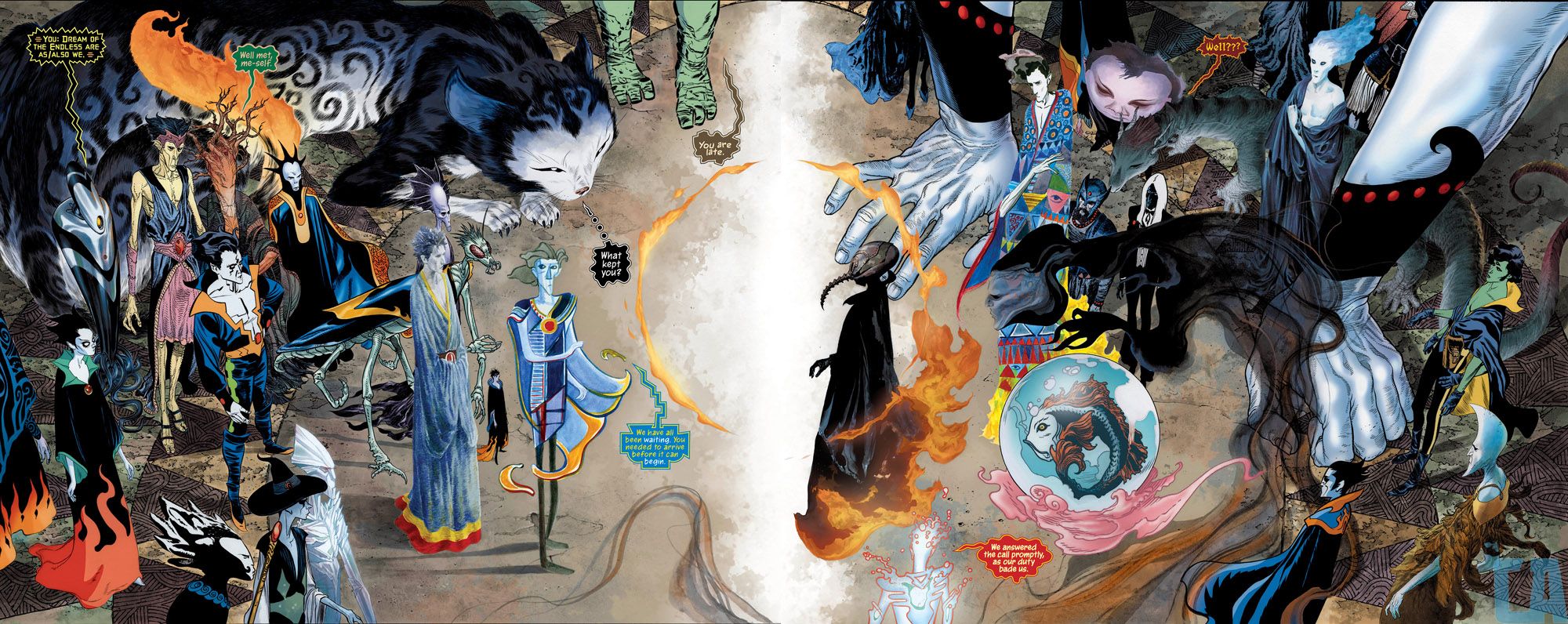Neil Gaiman's The Sandman is the story of Dream of the Endless, an ancient deity struggling to adapt to the modern world. Dream (AKA Morpheus) rules the realm of the Dreaming. He is not merely the Lord of Dreams but is the very concept of Dream personified.
While Morpheus is usually depicted as a ghostly-white man with black hair and a black robe, he can assume many forms, which is one of his most important of all his abilities.
Dream debuted in The Sandman #1 and was created by Neil Gaiman, Mike Dringenberg and Sam Keith. In a 1991 essay included in the trade paperback The Sandman: Preludes & Nocturnes, Gaiman described his first conception of the character: "a man, young, pale and naked, imprisoned in a tiny cell, waiting until his captors passed away...until the room he was in crumbled to dust; deathly thin, with long dark hair, and strange eyes: Dream. That was who he was. That was what he was."
This is more than just a visual image. This stoic willingness to wait reveals a character who is enduring, unyielding, Endless--and yet, he is Dream, and dreams are meant to change. Dream is not merely "who he was" but also "what he was"--someone and something simultaneously eternal and evanescent.
In the world of The Sandman, dreams are inherently part of reality, and of the seven members of the Endless, Dream is the third eldest (only after Death and Destiny). Dreams affect all life in the universe. Humans, cats, fey, flowers, stars, demons and gods are just a few of the entities which find themselves in the Dreaming or with their fates altered by dreams. Notably, Morpheus takes on a different form when dealing with each of these entities.
In issue #5, Dream meets two Justice League members: Scott Free and Martian Manhunter. Dream appears to Scott the way Gaiman first described him, but Martian Manhunter perceives him as a massive fiery skull, even getting down on one knee and addressing him as "Lord L'Zoril" before offering a prayer. When he romances the goddess Bast, he assumes a catlike appearance. When he courts Queen Nada, one of the first people, he appears to her as a handsome Black man. In The Doll's House, he meets at the same tavern with Hob Gadling every hundred years, updating his appearance to reflect the times.
The most extreme version of this shapeshifting manifestation occurs in The Sandman: Overture, the twenty-fifth-anniversary prequel story Gaiman created with J. H. Williams III. In one key scene, Dream encounters numerous versions of himself all in one place. There is a pharaonic Dream, a moon Dream, a Dream of Fish and another of trees. To make sense of this fractal gathering, a robotic-looking Dream refers to the group as "a multiplicity of perspective." Each aspect shows how he is perceived by a different group of dreamers.
Morpheus is eternal, as all cultures and conscious creatures have dreams of some kind. Yet as all of these are uniquely different, so too must Dream be able to change to manifest the beliefs, fears, and desires about which each group dreams. No culture or group has a monopoly on Dreams, and so this ability to change imbues the comic--and the character--with a universal quality not bound by any time, place or ideology. It is precisely because he is constantly changing into these different forms that Dream really is Endless.



